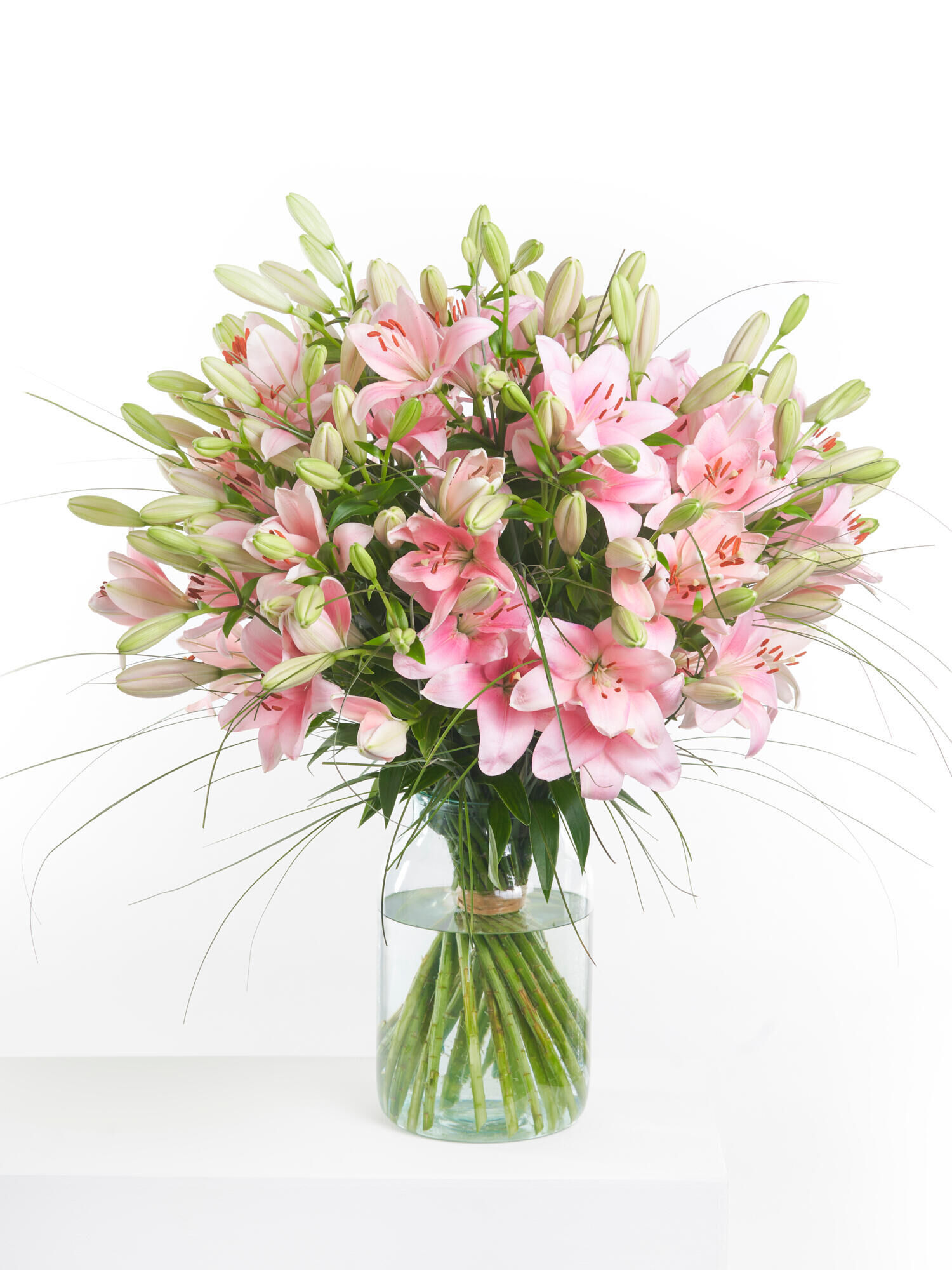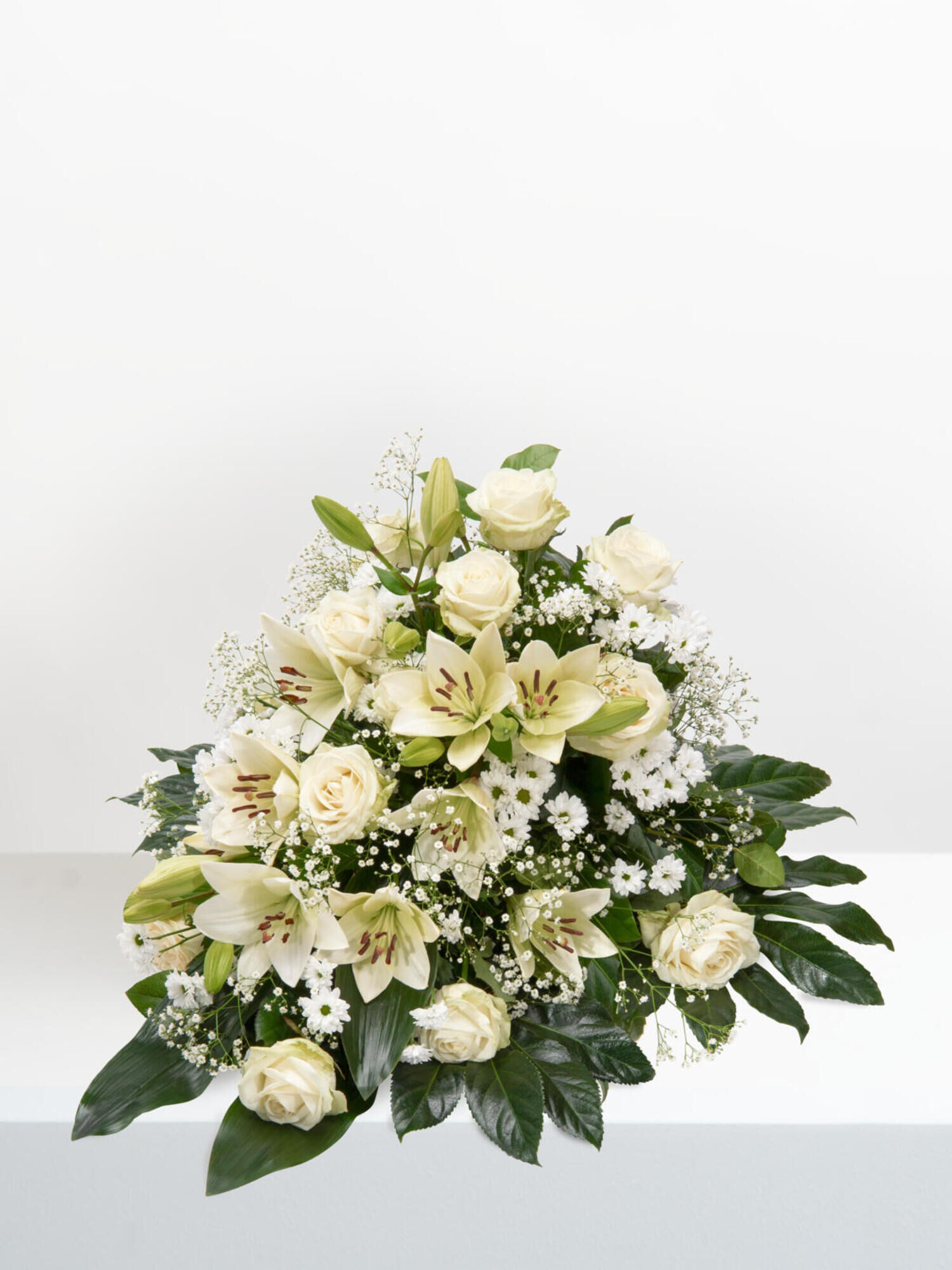Lilies – origin & care tips

Lilies belong to the lily family (Liliaceae) and grow as perennial herbaceous bulbous plants with sometimes very showy flowers. They are therefore used as ornamental plants in many different cultures. Some of their species are among the oldest ornamental plants of all and are used as religious symbols, such as the Madonna lily. The Asiatic lily is still used today as a food in Chinese cuisine and as a medicinal plant for chronic coughs, insomnia and blood disorders. Below you will learn about the meaning of the lily, the different types of lilies and how to propagate lilies.
Appearance and flowering time of the lily
All lilies grow perennially from bulbs and are herbaceous plants. Depending on the species and variety, they can reach a height of up to three metres. Their main flowering period is in July and August. However, many species flower between May and October.
Growth
Lilies are perennial, herbaceous plants that grow from a scaled bulb - the survival organ. These fleshy scales store nutrients. Unlike tulips, for example, this bulb has no protective outer skin. Lilies grow between 30 cm and three metres high, depending on the species and variety.
Leaves
All green lily leaves grow stemless and alternate on the lily stalk.
Flowers
The flowers of lilies differ greatly depending on the species and variety. Thanks to intensive breeding work, there is an almost infinite number of different flowers - trumpet-shaped, cupped with petals that curl backwards (such as the Turk's cap lily). Apart from the colour blue, the colour spectrum is also huge.
The origin of the lily
The genus Lilium is said to have originated in the Himalayan region, but today it is found on all continents of the northern hemisphere, mostly in temperate climates. China, Japan, North America and Europe are among the main areas of distribution.
A distinction is made between Oriental lilies and Asiatic lilies.
The Asiatic lily stands out in many colour variations. In contrast to the Oriental lily, they are not fragrant, but form strong stems and stand out due to their wide range of colours. There are, for example, the Madonna lily (Lilium candidum), the gold band lily (L. auratum), Korean lilies (L. pumilum), royal lilies (L. regale) and magnificent lilies (L. speciosum). In addition, the selection is extended by many hybrids that have been crossed from different lily species.
The Asiatic lily comes in many different colours, but it is not fragrant and is considered to be somewhat hardier than its oriental sisters and easier to grow. While it flowers from July, the Oriental lily flowers from August. It grows taller than the Asiatic lily and is well suited as a partner for tall perennials. You can enjoy the Oriental lily for six to eight weeks. It is ideal for pots and containers on balconies and patios and is available commercially pre-grown in pots.
The Madonna lily (Lilium candidum) performs best in a sunny location in a slightly calcareous substrate. There, it forms dense, intensely fragrant "nests" and, with a height of around 1.5 metres, goes well with tall perennials. It will sprout again the following spring. After flowering, the Madonna lily forms a flower head until autumn.
The Korean lily (L. pumilum) grows to a height of around 50 cm and develops small flowers from May to June. It likes sunny, well-drained soil and can be planted very well in rock gardens. It can also be planted in a flower meadow.
The Turk's cap lily (L. martagon) grows 50 to 200 centimetres tall with its sometimes cinnamon-scented and often spotted flowers. Its leaves are round and strong.
What is the meaning of the lily?
There are many meanings for the lily in literature. Probably the best-known story goes back to Zeus and Hera. This has given it the meaning of rebirth and fertility. Images of Madonna lilies can already be found on tiles on Crete. The oldest known depiction of a lily is probably Lilium chalcedonicum on around 3,500-year-old frescoes on the Greek island of Santorini.
In Christianity, lilies were mostly used to worship the Virgin Mary. The "Madonna lily" became a symbol of purity, virginity and innocence. Lilies, especially white lilies, are mentioned several times in the Bible, for example: "Look at the lilies of the field, how they grow: they labour not, neither do they spin."
Lilies, especially the white lily, are not only a symbol of fertility and purity, but also of transience, but also of unity and kindness. For a long time, the lily was known as the "flower of death" because it was often used in funeral arrangements and wreaths as an expression of deep compassion.
Care tips for lilies & frequently asked questions
Although lilies like it moist, they are extremely sensitive to waterlogging due to the lack of an outer skin on their bulb and their tendency to stem rot. A drainage layer before planting ensures good drainage of (irrigation) water.
Caution is advised with pets, especially cats, as the Turk's cap lily and other lilies are poisonous to cats and can cause kidney failure. Especially if cats brush against the pollen, the animals could get the pollen in their fur and thus ingest it.
If you have planted lily bulbs in the garden (ideally in September/October), you can leave these garden lilies in the ground in winter. The bulbs will sprout again next spring and flower even better if they are left in the same place for years. If it is too wet, the soil should be covered to prevent the bulbs from rotting. A lily in a pot must be kept frost-free indoors or in a cold garage over the winter.
Lilies like warm and sunny to semi-shady conditions. They enjoy a good supply of nutrients and lime.
When the lily flower has finished flowering, the flower can be cut back. But only when the above-ground parts of the plant have yellowed should a complete, radical cut be made.
When the lily flower has finished blooming, lily stems should only be cut off one third below the flower so that the nutrients can be drawn back into the bulb.
Yes, lilies are cut back, but only after all the above-ground parts of the plant have yellowed and the nutrients have been drawn back into the bulbs.
Lilies can be propagated by bulbs, some species also by nodules formed in the leaf axils. The new bulbs can be dug up in September/October and replanted. Propagation in pots at 10 to 12 degrees is ideal. It usually takes up to three years for the newly propagated lilies to flower. In addition, after flowering, brown capsule fruits with many flat seeds ripen, which produce new plants when sown.
Possible diseases and pests
The so-called "lily beetles", which cause extreme feeding damage, are feared. They are easy to recognise with their red-coloured carapace. Their legs and antennae are black. The pests measure a total of six to eight millimetres in size and should ideally be collected regularly, including the larvae, or sprayed off with a strong jet of water. In the case of heavy infestations, pesticides can also help. Beneficial insects such as parasitic wasps contain the lily beetles, and many birds and hedgehogs also ensure that the infestation is kept to a minimum. If the weather is warm and humid, grey mould (botrytis) can occur, particularly on leaves and flowers. Plant tonics help to strengthen the lilies during their development. Thrips and aphids are also possible pests for lilies. Voles and snails can also damage the crop. Aphids are often observed when growing lilies in pots.





















